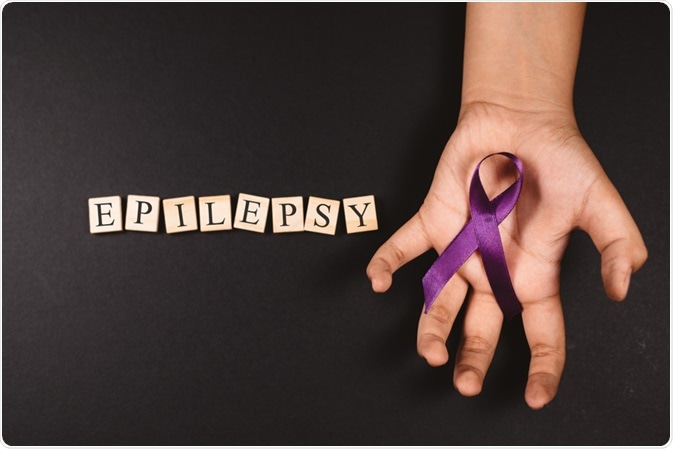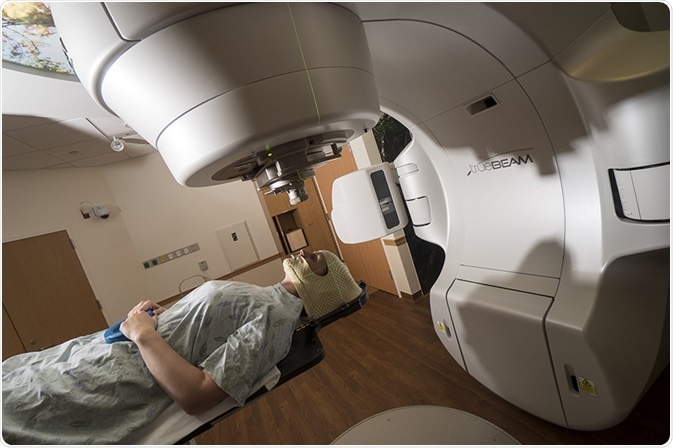Epilepsy is a chronic disease of the central nervous system characterized by recurrent seizures. It is a very common neurological disorder, affecting about 50 million people worldwide.
With timely diagnosis and proper treatment, epileptic seizures can be prevented in about 70% of patients. In recent years, a notable advancement in epilepsy treatment has been made to reduce symptom severity and improve the quality of life in epilepsy patients.

Image Credit: Hafiez Razali/Shutterstock.com
What is epilepsy?
Epilepsy is primarily characterized by partial or genernalized seizures, which are sometimes associated with loss of consciousness and involuntary bowel or urinary function. Epileptic seizures are caused by an increased rate of electrical firing from neurons located in different parts of the brain.
The intensity and frequency of seizures can vary from person to person. For example, the intensity can vary from mild muscle jerk to severe convulsion, and the frequency can vary from one per year to many per year.
Although the exact pathophysiology of epilepsy remains unknown in about 50% of patients, lack of oxygen supply to the brain is considered as one of the primary causes of epilepsy.
Also, brain malformation caused by congenital disorders, severe head injuries, brain infection (meningitis, encephalitis, etc.), certain genetic conditions, and brain tumors can increase the risk of epilepsy.
How is epilepsy treated?
The majority of epilepsy patients can live a seizure-free life with the help of anti-seizure medicines. These medicines provide maximum benefit when consumed exactly as prescribed. Discontinuation of medicine is possible if a person is not experiencing any seizure for some time.
If medicines fail to prevent seizures, a doctor may suggest brain surgery to remove the affected brain region that causes seizures. However, surgery is suggested only when brain imaging tests show that there is a well-defined brain region responsible for the seizures, and the region is not involved in any vital functions, such as speech, vision, hearing, and motor activity.
Apart from medicine and surgery, some alternative strategies, such as vagus nerve stimulation, deep brain stimulation, and a ketogenic diet, can help treat epilepsy.
What are the recent advancements in epilepsy treatments?
In recent years, a tremendous improvement in epilepsy diagnosis and treatment has been made to provide a seizure-free life, as well as to reduce a patient’s suffering arising from social discrimination, stigma, and misunderstandings.
To track possible seizure activities, wearable seizure detectors have been made. These devices are also helpful in preventing unexpected deaths in epilepsy caused by uncontrolled seizures.
To detect the source of seizures, many non-invasive techniques have been discovered that can directly target the brain region responsible for seizure onset. For example, in stereo-electroencephalography, thin electrodes are placed in the head to get information on brain activity, which can be used to point out the exact origin of seizure.
Once the source is identified, various newly discovered techniques can be applied to effectively treat epilepsy. One such technique is responsive neurostimulation wherein a pacemaker-like device is implanted within the brain.
The device evaluates the brain activity characteristics to detect the possibility of a seizure even before it happens and delivers electrical stimuli or drugs to inhibit the seizure. Similarly, a subthreshold stimulus can be applied continuously to a seizure-originating brain region to reduce the occurrence of seizures and improve a patient’s quality of life.
In addition, some minimally invasive surgical options have been developed to avoid the risks of open-brain surgeries in epilepsy patients. One such method is stereotactic radiosurgery wherein radiation is applied to a specific seizure-originating brain region to destroy the tissue and improve seizure outcomes.

Image Credit: DEPARTMENT OF HUMAN ONCOLOGY
Similarly, in MRI-guided laser ablation or laser interstitial thermal therapy, a small laser probe is inserted into the brain, and thermal energy is used to remove or destroy the brain tissue responsible for seizures.
In vagus nerve stimulation, a device is implanted underneath the chest skin and electrical pulses are transmitted from the device to the vagus nerve through a wire to reduce the frequency of seizures.
Similarly, external nerve stimulation devices have been developed that can be placed externally, and thus, the surgical steps related to device implantation can be avoided.
Similar to surgical improvements, advancement in drug-based treatment has also been made. In this context, one recent study has identified a drug, usually prescribed for multiple sclerosis patients, which can be potentially applied to epilepsy patients to improve seizure outcomes.
In the study, researchers have analyzed the metabolic alterations associated with epilepsy to identify the genes that are responsible for maintaining metabolic homeostasis. They have identified a mitochondrial gene namely dihydroorotate dehydrogenase, which upon inhibition by the pharmacological intervention (multiple sclerosis medication) can stably inhibit neuronal activity in the brain.
Dihydroorotate dehydrogenase, which plays a vital role in modulating metabolic changes caused by a ketogenic diet, has been found to act as a regulator of activity set points in the brain’s neural networks.
It has also been found that pharmacological inhibition of dihydroorotate dehydrogenase reduces the synaptic transmission and neuronal firing rate in the hippocampus and improves the seizure outcomes by reducing calcium overload in the mitochondria.
Further Reading